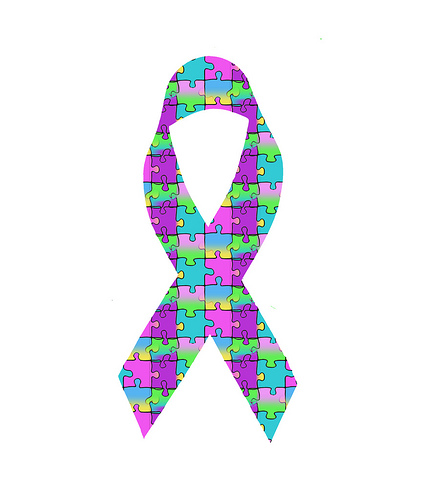
Autism is a complicated developmental impairment with signs and symptoms that generally appear during the first three years of childhood and continue throughout life. it is the most severe disorder within a group of developmental disorders called autism spectrum disorders (ASDs) or pervasive developmental disorders (PDDs) that cover a wide range of behaviors and symptoms, all related to a lesser or greater extent to impaired social and communication skills .
Autism remains a challenging condition for children and their families, but the outlook today is much better than it was a generation ago. At that time, most people with autism were placed in institutions. Today there are many Autism support groups organized by autism doctors who want to support and help those who have autistic family members.
Autism is a physical condition linked to abnormal biology and chemistry in the brain. The exact causes of these abnormalities remain unknown, but this is a very active area of research. there are probably a combination of factors that lead to autism.
Autism has had two meanings. The first, historically associated with schizophrenia , refers to the investment of a person’s psychic energy in his or her own delusions , which prevents the person from investing in the outside world. The second refers to an absence of development of communication with others beginning in earliest infancy .
Autism is a developmental disability that causes problems with social skills and communication. Autism can be mild or severe. it is different for every person. Autism is also known as autism spectrum disorders .
Autism is one of a group of serious developmental problems called autism spectrum disorders (ASD) that appear in early childhood — usually before age 3. Though symptoms and severity vary, all autism disorders affect a child’s ability to communicate and interact with others.
People with autism have normal life expectancies. Symptoms in many children improve with treatment, or as the children grow up, some eventually are able to lead normal or near-normal lives. Adolescence can worsen behavior problems in some children, and treatment should be adjusted for the child’s changing needs. According to the National Institute of Neurological Disorders and Stroke ( NINDS ), about one third of children with ASDs eventually develop epilepsy . The risk is highest in children with severe cognitive impairment and motor deficits.
The cause of autism remains unclear, but a psychological one has been ruled out. Neurological studies indicate a primary brain dysfunction, perhaps related to abnormalities that appear to occur in the way the autistic child’s brain develops. a genetic component is suggested by a pattern of autism in some families, and studies have suggested that a number of genes may be involved. The condition also appears to be more common in children born to older mothers or older fathers. Treatment in which autistic children are intensively and repetitively taught skills and behaviors from a young age appears to help some children with the disorder.
Children with autism may have problems with communication, social skills, and reacting to the world around them. not all behaviors will exist in every child. a diagnosis should be made by the child’s doctor or other professional with experience in working with children with autism. possible signs and symptoms are outlined below.
Some children with autism appear to respond to a gluten-free or casein-free diet. Gluten is found in foods containing wheat, rye, and barley. Casein is found in milk, cheese, and other dairy products. not all experts agree that dietary changes will make a difference, and not all studies of this method have shown positive results.
Some children with autism appear normal before age 1 or 2 and then suddenly “regress” and lose language or social skills they had previously gained. this is called the regressive type of autism.
While understanding of autism grew tremendously since it was first described by Leo Kanner in 1943, no known single cause for autism as of 2004 was yet identified, although research has shown that it results from specific abnormalities in brain structure or function. For example, brain scans show that the shape and structure of the brain in autistic children are different from those of non-autistic children. Researchers investigated several theories and established a firm link between heredity , genetics, and medical problems, while also establishing that no known psychological factors in the development of the child have been shown to cause autism.
There is no known cure for autism. In some cases, medications and dietary restrictions may help control symptoms. Intervention should begin when the child is young. Early intervention and preschool programs are very important. An evaluation by an SLP should be completed to determine social skill and communication needs. An appropriate treatment plan that meets the needs of the child and family can then be established. Treatment may include any combination of traditional speech and language approaches, augmentative and alternative communication, and behavioral interventions. it is also important to have the child’s hearing evaluated to rule out hearing loss.
Some doctors believe the increased incidence in autism is due to newer definitions of autism. The term “autism” now includes a wider spectrum of children. For example, a child who is diagnosed with high-functioning autism today may have been thought to simply be odd or strange 30 years ago.
As with any medical condition always seek professional advice by consulting a physician before deciding on any medical treatment.
this entry was posted on Saturday, February 5th, 2011 at 3:10 pm and is filed under arizona colleges. You can follow any responses to this entry through the RSS 2.0 feed. You can leave a response, or trackback from your own site.